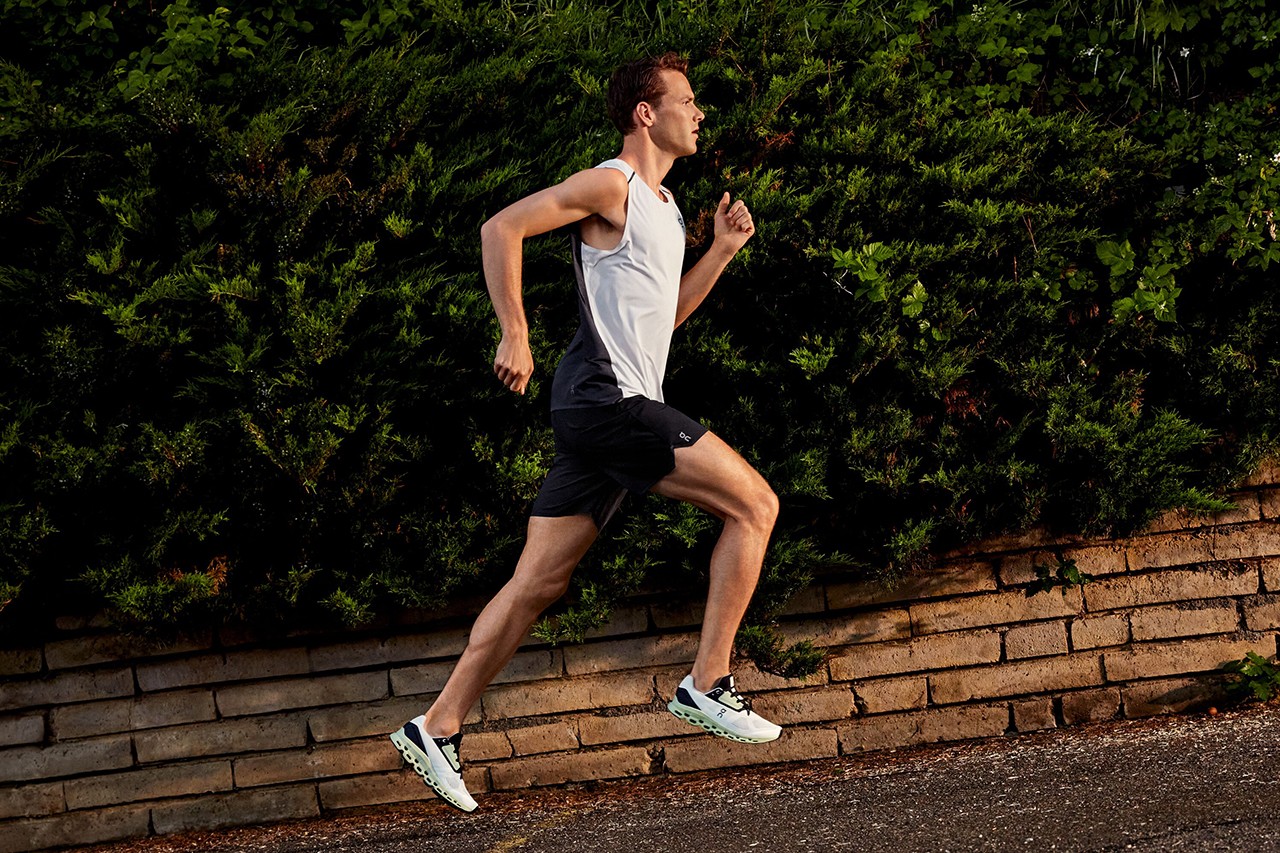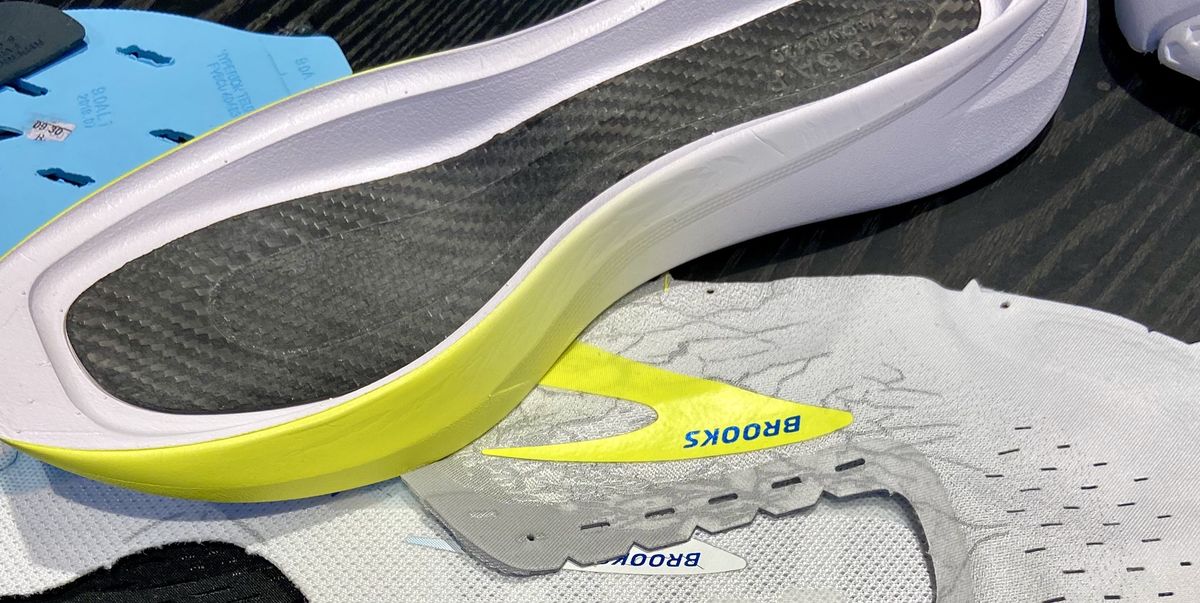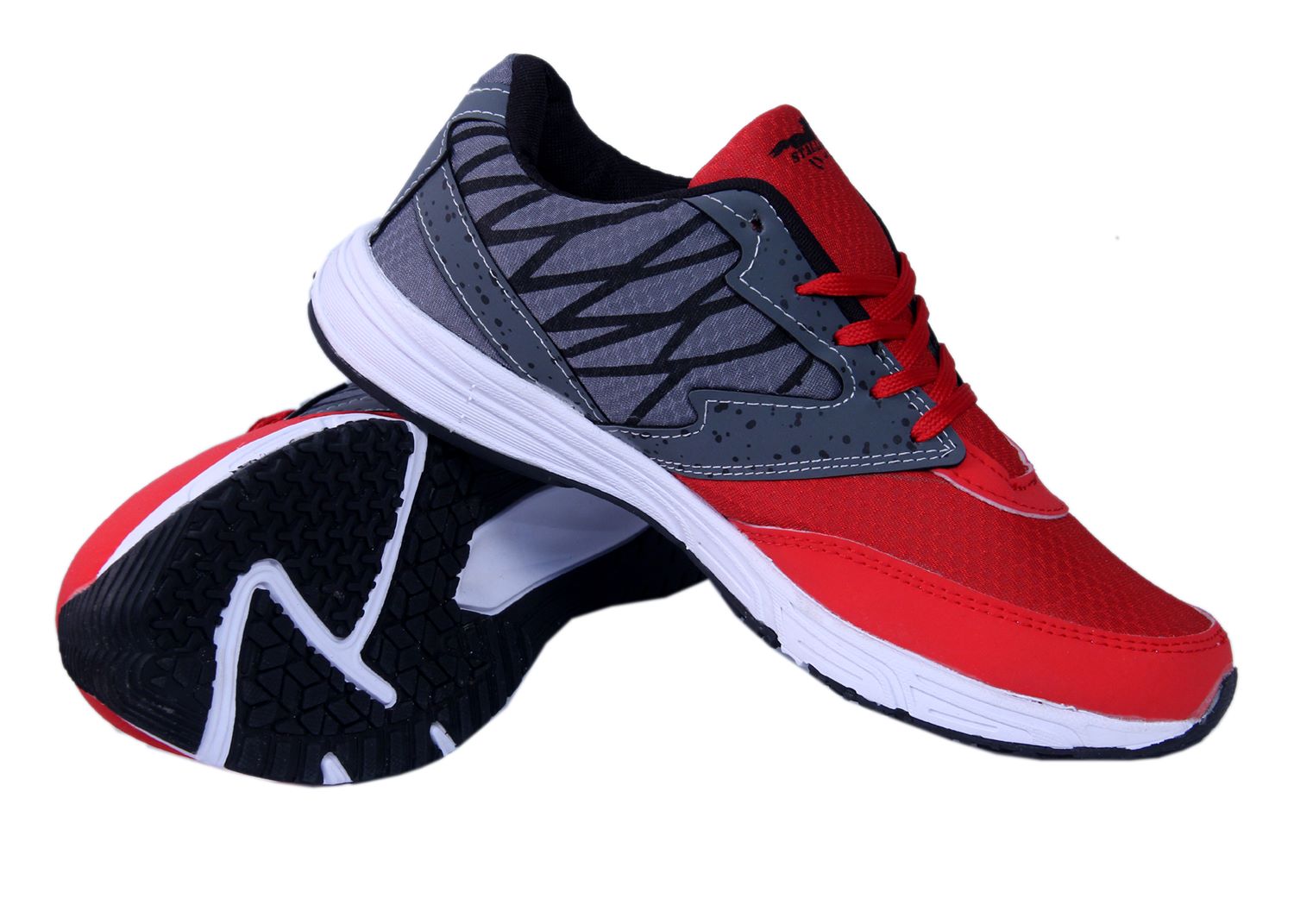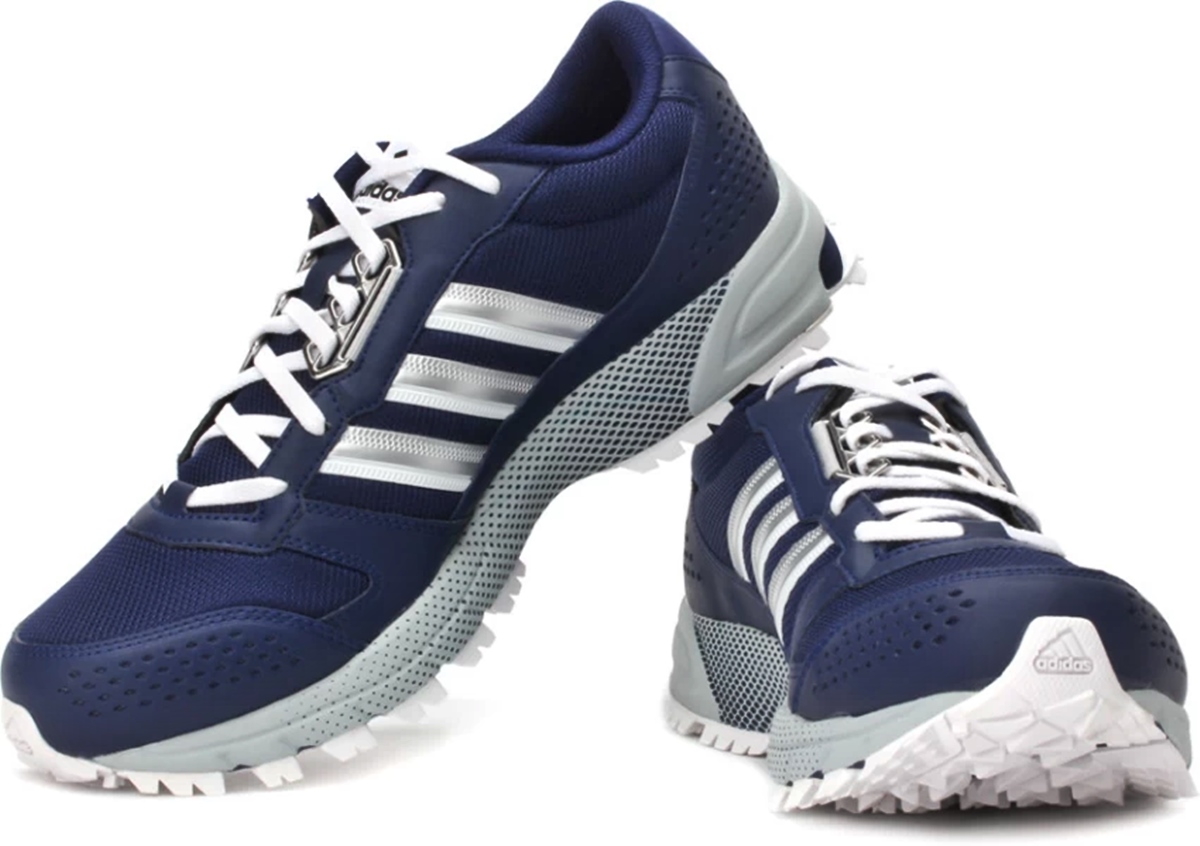

Featured
What Running Shoes Should I Get?
Modified: January 2, 2024
Find the perfect running shoes for you with our featured quiz. Discover the ideal pair to support you on your fitness journey.
Introduction
Choosing the right running shoes is crucial for any runner, whether you’re a seasoned marathoner or a casual jogger. The right pair of shoes can help prevent injuries, enhance your performance, and make your running experience more comfortable and enjoyable. With a plethora of options available in the market, it can be overwhelming to find the perfect pair tailored to your individual needs.
Luckily, there’s a solution to make the decision-making process easier: a running shoe quiz. By answering a few simple questions, you can narrow down your options and identify the perfect running shoes for you. This interactive quiz takes into account important factors such as terrain, pronation type, cushioning, stability, drop, running distance, and budget.
Gone are the days of blindly choosing running shoes based on advertisements or recommendations from friends. This quiz is designed to help you make an informed decision based on your unique preferences and requirements. By considering various aspects of your running style and needs, it will guide you towards the shoes that are best suited for your individual goals.
So, if you’re ready to find your perfect pair of running shoes, let’s dive into the quiz and discover which shoes are the optimal fit for you. Remember, running is not just about putting one foot in front of the other; it’s about finding the right gear to support and propel you towards your personal best.
Question 1: What terrain will you be running on?
When it comes to running shoes, one of the key factors to consider is the type of terrain you’ll be running on. Different running surfaces require different types of shoes to provide optimal grip and support. So, let’s determine the terrain you’ll be tackling during your runs.
If you primarily run on roads or paved surfaces, you’ll want to look for running shoes that are designed for road running. These shoes typically have a smooth outsole that provides excellent traction on hard surfaces. They also offer adequate cushioning to absorb the impact of repeated foot strikes on the pavement.
On the other hand, if you enjoy trail running or frequently venture off-road, you’ll need shoes specifically designed for trail running. These shoes feature a more aggressive outsole with lugs or treads that provide traction and stability on uneven, slippery, and loose surfaces. They often have added protection in the form of toe guards and reinforced uppers to shield your feet from rocks, roots, and other hazards encountered on trails.
For those who prefer a mix of road and trail running, there are hybrid shoes available that offer a balance between the features of road and trail running shoes. These versatile shoes have a combination of the smooth outsole for road running and the grippy outsole for trail running, making them suitable for runners who like to explore various terrains.
Before proceeding to the next question, take a moment to consider the type of terrain you’ll be running on most frequently. This will help determine the type of running shoes that will provide you with the necessary traction and stability. So, think about where your running adventures will take you and get ready to move on to the next question!
Question 2: What is your pronation type?
Pronation is a natural rolling motion of the foot that occurs as it strikes the ground while running or walking. It helps distribute the shock of impact and adapt to various surfaces. Understanding your pronation type is essential for finding the right running shoes that provide proper support and alignment for your feet.
There are three main types of pronation:
- Neutral pronation: If you have neutral pronation, your feet roll slightly inward upon impact, allowing for an even distribution of weight. Your footstrike is generally centered, and your arch remains stable. With neutral pronation, you can choose from a wide range of running shoe models, including those with moderate arch support and cushioning.
- Overpronation: Overpronation occurs when your foot excessively rolls inward upon landing. This can lead to an imbalance in weight distribution and decreased stability. Overpronators should look for running shoes that offer added stability and motion control. These shoes typically have features like firmer midsole materials, supportive arch structures, and reinforced heel counters.
- Underpronation (supination): Underpronation, also known as supination, happens when your foot rolls outward upon impact. This can result in less shock absorption and inadequate distribution of forces. Runners with underpronation benefit from shoes that provide ample cushioning to absorb the impact and promote better alignment. Additionally, shoes with a more flexible design can accommodate the outward rolling motion.
To determine your pronation type, you can perform a simple wet foot test. Wet the soles of your feet, stand on a piece of paper or cardboard, and observe the shape your foot leaves behind. If you see a well-defined arch with roughly equal width at the forefoot and heel, you likely have neutral pronation. If there’s a prominent arch and the width is narrower at the forefoot, you may have high arches and underpronation. And if the arch appears flatter, with a wider width at the forefoot, you may have low arches and overpronation.
Knowing your pronation type is crucial for selecting running shoes that provide the right support and stability for your feet. So, take a moment to determine your pronation type before moving on to the next question. Your feet will thank you!
Question 3: What is your preferred level of cushioning?
When it comes to running shoes, cushioning plays a vital role in providing comfort and absorbing the impact of each footstrike. The right amount of cushioning can make a significant difference in your running experience, helping to prevent fatigue and minimize the risk of injuries. So, let’s explore your preferred level of cushioning.
Some runners prefer a plush and soft cushioning that offers maximum shock absorption. These shoes provide a luxurious and comfortable ride, particularly suitable for long-distance runners or those who prioritize comfort over responsiveness. They are often equipped with technologies like gel inserts, air pods, or foam materials that offer superior cushioning properties.
On the other hand, some runners prefer a firmer and more responsive cushioning. These shoes provide a more direct and efficient energy transfer, allowing for a faster and more propulsive stride. They are often favored by speed-oriented runners or those who prioritize a lightweight and responsive feel. These shoes may feature responsive foam materials or minimalistic cushioning to achieve a more fast and nimble experience.
There are also running shoes that fall somewhere in between, offering a balanced level of cushioning. These shoes aim to strike a compromise between plush comfort and responsiveness. They provide adequate cushioning without sacrificing too much responsiveness or energy return. These shoes are often versatile and suitable for a wide range of runners and running purposes.
To determine your preferred level of cushioning, think about your running style and personal preferences. Consider your desired comfort level, the distances you typically run, and whether you prioritize cushioning over responsiveness. Remember that the right level of cushioning is subjective and varies from runner to runner.
Now that you have considered your preferred level of cushioning, you’re one step closer to finding your perfect running shoes! Get ready to move on to the next question, where we’ll explore the aspect of stability in your shoe selection process.
Question 4: What is your preferred level of stability?
Stability is an important factor to consider when choosing running shoes, as it affects your gait and helps prevent excessive pronation or supination. The level of stability you prefer in your running shoes depends on your foot mechanics and personal preference. Let’s delve into exploring your preferred level of stability.
For runners with neutral pronation or those who underpronate (supinate), a neutral or slightly stable shoe may be the best option. These shoes provide a good balance between support and flexibility, allowing for natural foot movements. If you have neutral pronation, you can enjoy the benefits of a wide range of neutral running shoe models, which often offer cushioning and support without excessive stability features.
For runners with overpronation, a stability shoe is recommended. These shoes feature additional support in the form of a medial post or firmer midsole foam on the inner side of the shoe. This helps to limit excessive inward rolling of the foot and promotes a more aligned and efficient stride. Stability shoes are designed to provide the necessary support and control to address overpronation issues.
There are also motion control shoes available for runners with severe overpronation. These shoes offer maximum support and stability with features like dual-density midsoles, reinforced sidewalls, and control systems. Motion control shoes are designed to limit excessive foot motion and are often recommended for runners who have flat feet or experience significant overpronation.
It’s important to note that not all runners require high levels of stability, even if they overpronate. Some may find that a moderate stability shoe provides enough support, while others may benefit from increased stability. It ultimately comes down to your personal comfort and running needs.
Think about your pronation type and any past experiences with stability or support features in running shoes. Consider whether you prefer a shoe with more stability or if you feel more comfortable in a neutral shoe. Your preferred level of stability will help guide you towards the right choice of running shoes.
Now that you’ve considered your preferred level of stability, it’s time to move on to the next question and explore the aspect of drop or heel-to-toe differential in running shoes.
Question 5: What is your preferred drop or heel-to-toe differential?
The drop or heel-to-toe differential refers to the difference in height between the heel and toe of a running shoe. It can affect the overall feel, biomechanics, and impact distribution during your runs. Understanding your preferred drop can help you choose running shoes that align with your comfort and performance needs. So, let’s delve into exploring your preferred drop or heel-to-toe differential.
Traditional running shoes usually have a heel-to-toe drop of around 10mm. This means that the heel is positioned higher than the toe by 10mm. The higher heel offers increased cushioning and can help with shock absorption, making it suitable for runners who land on their heels or prefer a more cushioned feel underfoot. It promotes a heel-striking running style.
Minimalist or barefoot-style running shoes, on the other hand, have a low or zero drop. This means that there is minimal height difference or no difference at all between the heel and toe. These shoes promote a more natural running style with a midfoot or forefoot strike. They offer a more responsive and ground-feel experience, mimicking the sensation of running barefoot. However, they provide less cushioning and shock absorption compared to shoes with a higher drop.
Many running shoe brands now offer a variety of drop options to cater to different preferences and running styles. Some shoes have a low drop, around 4-8mm, which provides a balance between cushioning and a natural feel. These shoes are suitable for runners who want a combination of cushioning and responsiveness without the extreme minimalism of zero-drop shoes.
To determine your preferred drop, consider your current running style and any past experiences with different drop levels. Think about whether you prefer a more cushioned heel-strike or a more natural midfoot or forefoot strike. Keep in mind that transitioning to a different drop level may require an adjustment period for your lower-leg muscles and running technique.
Taking into account your preferred drop will help narrow down your choices and find running shoes that provide the desired combination of cushioning, responsiveness, and natural feel. So, consider your preferences and get ready to explore the next question related to your usual running distance!
Question 6: What is your usual running distance?
When it comes to choosing the right running shoes, the distance you typically run plays a significant role. Running shoes are designed with different features and specifications to cater to the specific needs of various running distances. So, let’s dive into exploring your usual running distance to help guide you towards the perfect pair of shoes.
If you are a beginner or primarily engage in shorter distance runs, such as 5K or 10K races, you may benefit from lightweight and flexible running shoes. These shoes are often designed to prioritize speed and agility, with minimal cushioning and a more responsive feel. They are suitable for shorter, faster-paced runs where the focus is on performance rather than all-day comfort.
For those who regularly tackle half-marathons or longer distances, more cushioned shoes with increased shock absorption may be beneficial. These shoes provide enhanced comfort and support for longer periods of time, helping to reduce fatigue and impact-related injuries. Look for shoes with ample cushioning and stability features to ensure a smooth and comfortable ride throughout your runs.
It’s important to note that individual preferences may vary. Some runners may prefer more cushioning for shorter distances, while others may opt for a lighter and less cushioned shoe for longer runs. Experiment and find what works best for you and your running style.
Additionally, if you engage in a combination of shorter, faster runs and longer distance training, you may consider having different pairs of shoes to accommodate the specific demands of each type of run. This allows you to optimize your performance and comfort based on the distance you are tackling.
Think about your usual running distance and the goals you have set for yourself. Consider whether you prioritize speed, endurance, or a balance of both. Understanding the demands of your usual running distance will help guide you towards the running shoes that align with your performance and comfort needs.
Now that you’ve reflected on your usual running distance, let’s move on to the final question, where we’ll discuss your budget for purchasing your ideal running shoes.
Question 7: What is your budget?
When considering purchasing running shoes, it’s essential to establish your budget. Running shoes can vary significantly in price, depending on factors such as brand, technology, and materials used. By determining your budget, you can narrow down your options and find a pair that suits both your needs and financial constraints. Let’s delve into exploring your budget preferences to help you make an informed decision.
Running shoes can be categorized into three main price ranges: budget-friendly, mid-range, and premium.
For those on a tight budget or looking for a more affordable option, budget-friendly running shoes are a suitable choice. These shoes often come with basic features and may have less advanced cushioning or support technologies. However, they can still provide adequate comfort and functionality for recreational runners and beginners.
Mid-range running shoes offer a balance between quality and affordability. These shoes typically have more advanced technologies and materials, providing a better combination of cushioning, stability, and durability. They are a popular choice among many runners as they offer a good value for the price.
Premium running shoes are at the higher end of the price spectrum and often come with the latest innovations and cutting-edge technologies. These shoes are designed for serious athletes, advanced runners, or those who demand the highest level of performance and comfort. Premium running shoes may have specialized features, lightweight materials, and advanced cushioning systems, but they come at a higher cost.
Consider your budget and how much you are willing to invest in your running shoes. Think about your level of commitment to running and the importance of having high-quality footwear. Keep in mind that investing in a good pair of running shoes can contribute to your overall running experience and help prevent potential injuries.
While it’s essential to set a budget, it’s advisable not to compromise on the quality and fit of the shoes solely based on price. If possible, try to allocate a reasonable budget that allows you to choose from a wider range of options while still meeting your specific needs and preferences.
Once you have established your budget, you’re ready to embark on the journey of finding the ideal running shoes that strike the perfect balance between performance, comfort, and affordability.
Now that we have explored all the questions, it’s time to take your answers into consideration and find the running shoes that perfectly align with your preferences and requirements. Let’s get ready to step into a more enjoyable and optimized running experience!
Conclusion
Choosing the right running shoes is vital for a comfortable and enjoyable running experience. With the help of this comprehensive running shoe quiz, you can narrow down your options and find the perfect pair that suits your individual needs.
Throughout the quiz, we explored various factors that influence the selection of running shoes. We considered the terrain you’ll be running on, your pronation type, preferred level of cushioning, stability needs, heel-to-toe drop preference, usual running distance, and budget.
By taking into account these crucial aspects, you can make an informed decision and find the running shoes that provide the necessary support, comfort, and performance you desire. Whether you’re tackling the road, hitting the trails, looking for extra cushioning, or added stability, there is a pair of running shoes out there that will suit you perfectly.
Remember, finding the right running shoes is not a one-size-fits-all approach. Every runner is unique, and understanding your own preferences and specific requirements will help guide you towards the perfect pair of shoes.
So, get ready to embark on your running journey with confidence, knowing that you have equipped yourself with the knowledge to find the ideal running shoes that will support you every step of the way.
Happy running!








